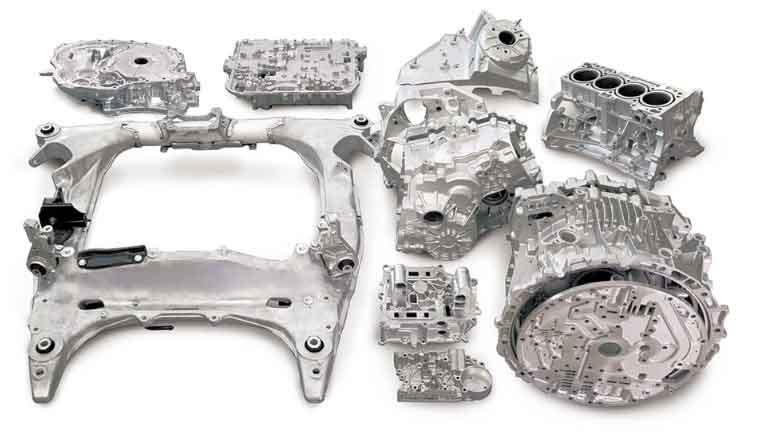
The die casting industry continues to evolve, driven by advancements in technology, materials, and manufacturing processes. Several innovations and trends are shaping the future of die casting:
- Advanced Materials: The development and utilization of new materials are driving innovation in die casting. Aluminum alloys with improved strength, thermal conductivity, and corrosion resistance are being introduced. Additionally, the use of lightweight materials such as magnesium and composites is gaining traction, enabling the production of lighter components with enhanced performance.
- High-Pressure Die Casting (HPDC): HPDC is undergoing advancements to improve efficiency and part quality. New technologies are focused on optimizing filling and solidification processes, reducing porosity, and enhancing mechanical properties. Additionally, advancements in real-time process monitoring and control systems are enabling precise adjustments for improved part quality and consistency.
- Automation and Robotics: Automation and robotics are increasingly being integrated into die casting operations. Robotic systems handle tasks such as part extraction, trimming, deburring, and quality inspection. This integration improves process efficiency, reduces labor costs, enhances safety, and enables continuous operation.
- Industry 4.0 and Digitalization: The integration of Industry 4.0 principles and digital technologies is transforming die casting operations. Internet of Things (IoT) sensors, data analytics, and predictive maintenance systems are being implemented to monitor and optimize production processes in real-time. Digital twin technology is also being used to simulate and optimize die casting operations, enabling faster product development and process optimization.
- Additive Manufacturing and Die Casting Hybridization: Additive manufacturing, such as 3D printing, is being combined with die casting to create hybrid manufacturing processes. This allows for the production of complex components with intricate internal geometries that are traditionally challenging to achieve through die casting alone. Additive manufacturing also enables the creation of customized inserts or tooling components for die casting, reducing lead times and costs.
- Improved Tooling Technologies: Advancements in tooling technologies are enhancing the efficiency and performance of die casting. High-speed machining, advanced cooling channels, conformal cooling, and optimized die designs are improving part quality, reducing cycle times, and increasing tool lifespan. Simulation software enables virtual testing and optimization of die designs, reducing the need for costly physical prototypes.
- Environmentally Friendly Die Casting: Sustainable manufacturing practices are gaining importance in the die casting industry. Efforts are being made to reduce energy consumption, minimize waste generation, and optimize material usage. The development of eco-friendly die casting processes, such as low-pressure and vacuum-assisted die casting, helps reduce environmental impact.
- Lightweighting and Electric Vehicle (EV) Applications: With the growing demand for lightweight components in the automotive and aerospace industries, die casting is playing a vital role. The increasing shift towards electric vehicles is further driving the demand for die-cast components for EV powertrains, battery housings, and structural components.
The future of die casting is marked by continuous advancements in materials, process optimization, automation, digitalization, and sustainability. These innovations are expected to drive higher efficiency, improved part quality, increased design flexibility, and expanded applications in various industries. Collaborative research and development efforts, along with a focus on sustainability, will further propel the die casting industry forward in the coming years.
